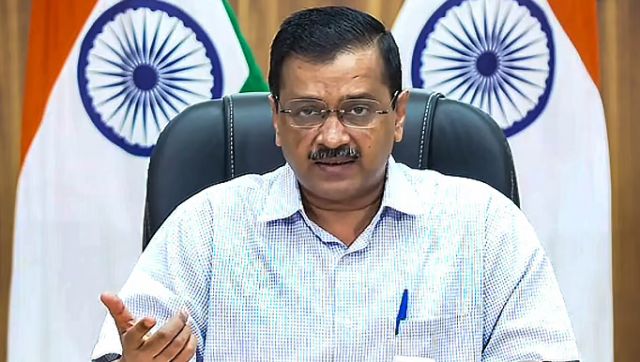Punjab is narrating an interesting story. The Aam Aadmi Party (AAP), on the back of a landslide win, is now promising “Utthta Punjab” (Rising Punjab), erasing ugly memories of “Udta Punjab” (drug-ridden Punjab). The AAP says that this win is an aashirwad (blessing) and the next step to truly become a “national and natural alternative”. Cleverly keeping an eye on the 2024 Lok Sabha elections, voices within the AAP are already projecting Arvind Kejriwal as the main alternative to the BJP. They have achieved this against the backdrop of Congress self-destructing through its internal squabbling. Farmers were livid with the Shiromani Akali Dal (SAD)-BJP combine over the farm laws. The angry youth, devoid of any future, looked for a fresh alternative. This is where AAP stepped in.
***
**Click here for Punjab Election Result 2022 Live Updates*****
The AAP announced a Sikh as its chief ministerial face. Stayed away from NRIs financing its campaign since the danger lurked of radical elements coming in. So, the “Delhi Model” came into play with an emphasis on education, health and power. This is what the youth in Punjab wanted to hear. The AAP had secured 20 out of the 117 seats in Punjab in 2017, trailing far behind the Congress which had won 77 seats at that time. A total of 59 seats is required to get a majority in the Punjab Assembly. The AAP satisfied Punjab voters by projecting its ability to translate the “Delhi Model” of good governance to Punjab, built on twin planks of good health and education facilities. The party promised a host of freebies and sops to the Punjabi voters. Now, that they would be in the saddle requires a different mindset Briefly, the change happened due to these triggers: 1. In Punjab, power has alternated between the SAD, which had a 24-year-long partnership with the BJP from 1997 to 2001, and Congress, with the former winning in 2007 and 2012. Amarinder Singh was accused of soft-pedalling on charges against the Badals (SAD). People across Punjab, Malwa in particular, voted for a change. 2. Arvind Kejriwal struck an immediate chord with voters because of the four aspects of his Delhi model — quality government education, health, power and water at cheap rates. 3. AAP was supported by youth and women voters. Kejriwal promised better education and employment. Also, a promise of depositing a sum of Rs 1,000 per month into the accounts of women in Punjab. 4. Bhagwant Mann as the chief ministerial face meant a son of the soil would be the leader. 5. Farmers forced the Centre to repeal the three contentious farm laws. Farmers dominating the Malwa region with 69 seats made their presence felt. Punjab was beset with the deepening problems of unemployment, drugs, price rise, and the abysmal state of health and education infrastructure. The AAP package offered world-class schools and hospitals, and a minimum support price for fruits and vegetables. Unemployment, illegal sand mining, drug mafia, liquor mafia, transport mafia, cable mafia, farmers’ distress, corruption and rising state’s debt concerned the voters. The AAP primarily focused on two issues — education and illegal sand mining. Arvind Kejriwal said Punjab would earn Rs 20,000 crore by stopping illegal sand mining. He said that the money could be used for the welfare of the people. He promised once the AAP forms the government in Punjab, all sorts of mafia, including illegal sand mining, would be eradicated. Now, the vital challenge of the path ahead is what the AAP needs to worry about. Fact remains the “Delhi model” is yet to be tested by the Punjabi people. Both education and health facilities are in a bad shape. Punjab is by and large an agrarian state with agriculture taking over rural areas stretching over 50,000 square km. At least 62 percent of Punjab’s electorate live in these areas. These are farmer-dominated turfs with dicey agricultural issues. Knowing the difficulties involved, both Congress and SAD looked the other way. Small street corner meetings happened during the run up as big election rallies were banned due to Covid restrictions. This suited AAP as it worked quietly, but effectively, in the rural belt. And Kejriwal also connected with the smaller industries in the semi-urban belts. AAP leader Bhagwant Mann, who heads the AAP’s Punjab unit, and is a two-term and sitting MP from Sangrur parliamentary constituency, is the party’s chief ministerial face. Mann is a well-known Punjabi comedian and actor. He would need to massively punch above his weight. The author is CEO of nnis. Views expressed are personal.


)
)
)
)
)
)
)
)
)



